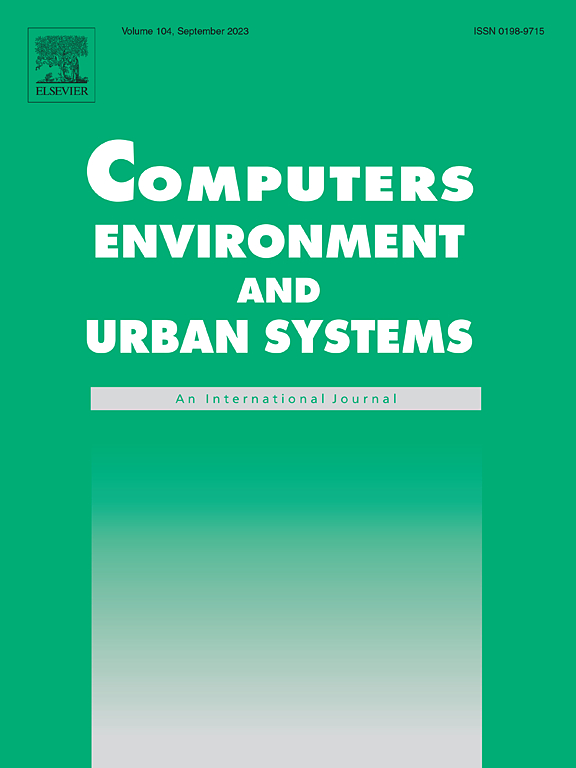用可解释的图神经网络解释与城市功能相关的城市形态核心形式
IF 8.3
1区 地球科学
Q1 ENVIRONMENTAL STUDIES
Computers Environment and Urban Systems
Pub Date : 2025-02-24
DOI:10.1016/j.compenvurbsys.2025.102267
引用次数: 0
摘要
了解城市形态和功能之间的高阶关系对于建立可持续城市系统的潜在机制至关重要。然而,为复杂的城市形式建立一个准确的数据表示是具有挑战性的,这些形式很容易用人类的术语来解释。本研究提出了核心城市形态表征的概念,并开发了一个可解释的深度学习框架,用于将复杂的城市形态解释为新的表征,我们称之为CoMo。CoMo通过解释训练良好的深度学习模型,其加权f1得分稳定在89.14%,为揭示城市功能和城市形态之间的联系提供了一种很有前途的方法,可以从核心城市形态表征的角度来揭示城市功能和城市形态之间的联系。我们以波士顿为研究区域,分析了个体建筑、街区和社区层面的核心城市形态,这些核心城市形态对相应的城市功能至关重要。住宅核心形式遵循城市脊梁的渐变形态模式,与中心-城市-郊区过渡相一致。此外,我们还证明了城市形态直接影响土地利用效率,其与区位具有显著的强相关性(R2 = 0.721, p <;0.001)。总体而言,CoMo可以解释地象征城市形态,为经典的城市区位理论提供证据,并为数字孪生提供机制见解。本文章由计算机程序翻译,如有差异,请以英文原文为准。
Interpreting core forms of urban morphology linked to urban functions with explainable graph neural network
Understanding the high-order relationship between urban form and function is essential for modeling the underlying mechanisms of sustainable urban systems. Nevertheless, it is challenging to establish an accurate data representation for complex urban forms that are readily explicable in human terms. This study proposed the concept of core urban morphology representation and developed an explainable deep learning framework for explicably symbolizing complex urban forms into the novel representation, which we call CoMo. By interpretating the well-trained deep learning model with a stable weighted F1-score of 89.14 %, CoMo presents a promising approach for revealing links between urban function and urban form in terms of core urban morphology representation. Using Boston as a study area, we analyzed the core urban forms at the individual-building, block, and neighborhood level that are important to corresponding urban functions. The residential core forms follow a gradual morphological pattern along the urban spine, which is consistent with a center-urban-suburban transition. Furthermore, we prove that urban morphology directly affects land use efficiency, which has a significantly strong correlation with the location (R2 = 0.721, p < 0.001). Overall, CoMo can explicably symbolize urban forms, provide evidence for the classic urban location theory, and offer mechanistic insights for digital twins.
求助全文
通过发布文献求助,成功后即可免费获取论文全文。
去求助
来源期刊

Computers Environment and Urban Systems
Multiple-
CiteScore
13.30
自引率
7.40%
发文量
111
审稿时长
32 days
期刊介绍:
Computers, Environment and Urban Systemsis an interdisciplinary journal publishing cutting-edge and innovative computer-based research on environmental and urban systems, that privileges the geospatial perspective. The journal welcomes original high quality scholarship of a theoretical, applied or technological nature, and provides a stimulating presentation of perspectives, research developments, overviews of important new technologies and uses of major computational, information-based, and visualization innovations. Applied and theoretical contributions demonstrate the scope of computer-based analysis fostering a better understanding of environmental and urban systems, their spatial scope and their dynamics.
 求助内容:
求助内容: 应助结果提醒方式:
应助结果提醒方式:


